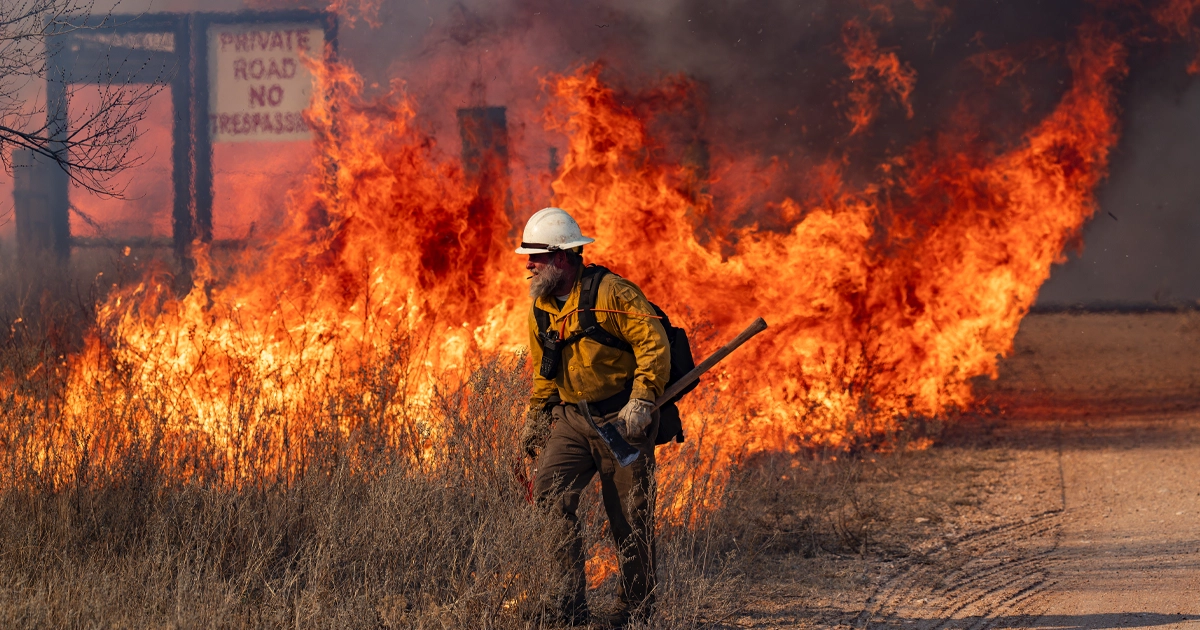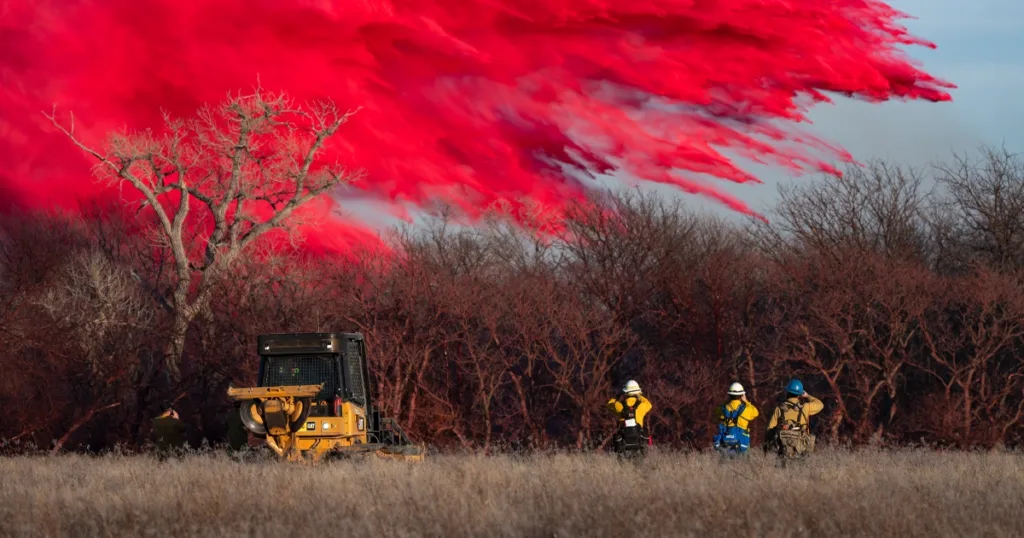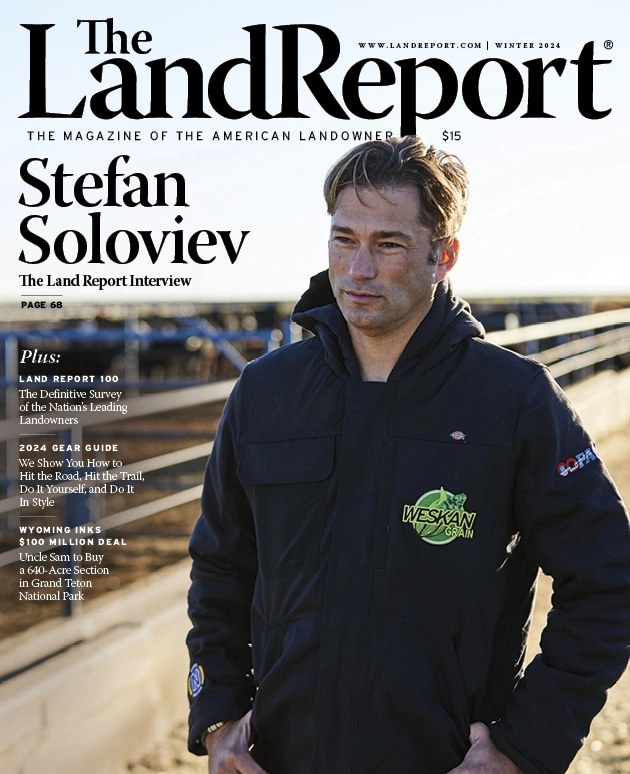Million-Acre Wildfire Scorches Texas Panhandle
Million-Acre Wildfire Scorches Texas Panhandle
By Lisa Martin
Photography By Sam Craft / Texas A&M AgriLife

LR_TexasWildfires-01
ROBERTS COUNTY. A firefighter battles the Smokehouse Creek Fire on March 2, 2024.
A downed utility pole ignited a million-acre wildfire in the Texas Panhandle and adjacent Oklahoma counties. The Smokehouse Creek Fire sparked on February 26, charred more than 1 million acres, and took almost three weeks to contain. A second inferno, known as the Windy Deuce Fire, burned 144,000 acres. Nearly 35,000 acres were burned by the Grape Vine Creek Fire. All told, more than 1.2 million acres in the Texas Panhandle and Oklahoma burned.
On March 7, Xcel Energy released a statement acknowledging “that its facilities appear to have been involved in an ignition of the Smokehouse Creek Fire,” which claimed two lives. Texas Governor Greg Abbott reported that more than 500 structures had been destroyed.
Ideal Conditions for a Blaze
Conditions that caused grazing land in the Panhandle to flourish this winter, including abundant rainfall and low stocking rates, combined with high winds to make the region vulnerable to a devastating blaze, says Morgan Treadwell, a controlled burn specialist with Texas A&M AgriLife extension service.
“Fire is supposed to be rejuvenating, but this is the fire I don’t want producers ever to experience,” Treadwell says. She hopes the tragedy will compel communities to implement wildfire mitigation strategies such as building fences with metal posts rather than wooden ones.
The Perryman Group projects ag-related losses resulting from the Panhandle fires to top $265 million. Cattle losses, which number in the thousands, are still being tallied. Restocking will be costly. In addition to higher interest rates, beef cattle numbers nationwide are at a 61-year low per the USDA.
Consumers may not see higher beef prices, according to David Anderson, a livestock economist with Texas A&M Extension Service. “But if you’re an operator, it’s a disaster, and the timing is terrible in terms of the cattle market. Ranchers have lost cows at a time when their calves are being sold for record prices. So they’ve lost record income. And interest rates are high now, meaning borrowing is more expensive if they want to rebuild,” he says.
Perilous Effect on Native Species
The impact on native wildlife by the million-acre wildfire was catastrophic. Dr. Dale Rollins, director of outreach at the Rolling Plains Quail Research Foundation, cites numerous examples of coveys lost to the waves of wildfire. Rollins says that “proper grazing management, including total rest for the next two years, is recommended to facilitate recovery of quail on wildfire-ravaged sites.”
Texas House Speaker Dade Phelan announced the creation of a five-member Investigative Committee on the Panhandle Wildfires to evaluate state response plus wildfire preparedness. Texas Governor Greg Abbott requested disaster declarations from the US Small Business Administration in the form of disaster loans for those impacted in Carson, Hemphill, and Hutchinson counties.
Xcel Energy encourages anyone who lost livestock and other property in the Smokehouse Creek Fire to submit an online claim to the power company. USDA also offers its Emergency Conservation Program and others to help ranchers recover and rebuild.
“The 2017 fires were supposed to be a once-in-a-century event and here we are right back at those crossroads in 2024,” says Treadwell. “We’ve got to realize that these aren’t one-time occurrences anymore.”
 Fire retardant descends on a portion of the Smokehouse Creek Fire in Hemphill County.
Fire retardant descends on a portion of the Smokehouse Creek Fire in Hemphill County.
Published in The Land Report Texas 2024.




